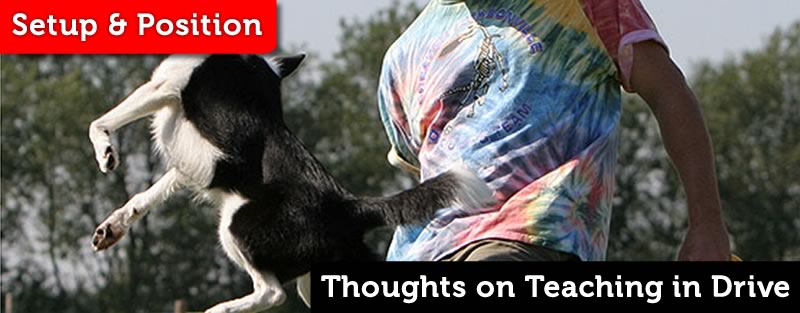
Some Thoughts on Teaching in Drive
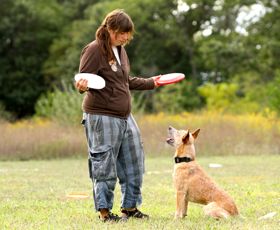
Here Abby works Attention with Pompeii at the Farm. Pompeii has to release the disc and look Abby in the eye to earn a Frisbee. This is Self Discipline and Self Discipline with a high drive dog is a necessity.
A dog that is engaged in drive is often hard to handle and gives many good discdoggers fits. It is important for handlers to be able to work with the dog when it is high on drive because the game of disc engages many aspects of drive in our dogs: prey/kill, eye, stalking, chase…
The strength of these aspects of drive are breed specific, and also individually specific. A heavy focus on one aspect of disc drive can really damage our game. Too much eye from a herding dog can frustrate handlers to no end. Too much prey/kill and your dog is likely to be all over you when you are trying to play or will be shredding discs. You need to be able to work with your dog while he is engaged in drive, as playing disc is going to activate all kinds of drive in your dog. There are several key factors that are necessary for teaching in drive.
Resource Control
When teaching in drive, controlling our dog’s access to the disc is a necessity. It is unacceptable for your dog to attempt to bite or grab the disc without being asked. You control the disc and your dog’s access to it, and with the driven dog, this is a necessity.
Unsolicited bites should be not be tolerated. Heavy pawing and leaping on the handler should be not be tolerated. Targeting the discs with a nose or paw and light pawing at your body should be ignored.
Discs are Quiet when they are stable and close to your body and Loud when they are away from the body and moving quickly. Quiet discs are not appealing targets and Loud discs are hard to resist.
Attention
When our dogs give up their attempts to get the disc without permission, and offer eye contact Unsolicited eye contact or Attention is a great way to hook up with a dog. If you have something the dog wants he should give eye contact in order to get access to... More (often right after they sit), then we are ready to play.
Unsolicited eye contact or Attention is a great way to hook up with a dog. If you have something the dog wants he should give eye contact in order to get access to... More (often right after they sit), then we are ready to play.
Getting your dog’s attention means that he has released the focus of his drive, the disc, and has shifted focus to the handler. This is the first step of teaching in drive, as we can’t do anything of meaning with our dog’s until we get their attention. If our dogs give us their attention to get access to discs, we don’t have to worry about that.
Patience not Pressure
Teaching in DriveDrive is focus and energy applied towards work. There are many kinds of Drive: social drive, tracking drive, prey drive, bite/kill, stalking, and food to name a few. Social drive, prey drive, and... More requires patience, not pressure. Pressuring a driven dog is often counter productive. Pressure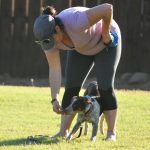 Pressure comes in many forms in dog training. Positional Pressure, Performance Pressure, Environmental Pressure, the Plane of the handler’s body. Pressure is a fact. How you wield it or leverage it is up... More a retrieve, and you are going to get avoidance. Pressure a release, and you are going to get aggression or avoidance.
Pressure comes in many forms in dog training. Positional Pressure, Performance Pressure, Environmental Pressure, the Plane of the handler’s body. Pressure is a fact. How you wield it or leverage it is up... More a retrieve, and you are going to get avoidance. Pressure a release, and you are going to get aggression or avoidance.
Instead of pressure and corrections, we need to use patience and rewards. We want to help the dog make a good decision, not make the dog’s decision for them.
When the dog believes that releasing a disc makes something awesome happen, he’ll spit that disc out and he’ll do it because he wants to.
Planning
Working on a retrieve requires that we use different techniques than working on a drop, which is different from working a mouth to hand transfer. When we’re working with a high drive dog who is engaged in drive, we have to move quickly and efficiently to the lesson. The lesson must then be executed well and brought to a clean and successful conclusion.
We need to focus on getting the desired behavior and ignore all behaviors that are not pertinent to the task at hand. We will develop and follow a plan in order to keep the game moving and the interaction productive.
If we are out in the yard working on a vault and our dog comes jogging in with a disc after a nice attempt and drops it early, we’re going to ignore that, as it’s not pertinent to the work we’re doing. If we give the dog a hard time for dropping early, the vault training session’s flow is damaged (way to reinforce that nice effort on the vault, eh?) and the entire focus of the session could change from Vault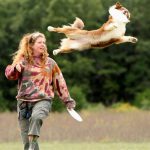 The dog uses the player´s body as a launching pad to jump for a disc. A Vault is a leaping catch from the handler’s body. The dog leaves the ground for the target... More to Drop. Nothing kills momentum like arbitrary rigid criteria on silly details.
The dog uses the player´s body as a launching pad to jump for a disc. A Vault is a leaping catch from the handler’s body. The dog leaves the ground for the target... More to Drop. Nothing kills momentum like arbitrary rigid criteria on silly details.
If our dog drops early in a vaulting session, we should make note of it and work to not let it happen again. Predicting the drop and cuing it might be a good idea. We can even just let it go. Gasp!… That’s right, we can just let it go and work on a drop in a session later in the day. It’s not a big deal. The point of the lesson was to work vaults, right? Let’s stick to the plan.
Plan your train, and train your plan. Especially with high drive dogs.
Drive Management
What we want to do is manage our dog’s drive, just as if we had our hands on a dial that controls the level of excitement.
If we are working with the driven dog, we need power. That power comes in the form of access to the focus of the dog’s drive, hopefully this is a disc. If a dog is a disc freak we can manipulate his behavior through access to our discs. Restricting access to the target for poor decisions and behavior and granting access for appropriate behavior.
We can slow the game down and do some eye contact if the dog is getting too high or we can jazz him up by Loudly waving the discs around, doing some bitework or firing out rollers.
Give Up Control
Probably the hardest thing for disc dog handlers to do when working high drive dogs is to give up control. It’s the dog’s responsibility to perform these skills. If they perform the skills, we can play disc together. If they don’t perform the skills, no play. If the dog likes to play disc, they will do whatever is required to play the game. Ask for the drop and wait for it to happen. When it happens, mark it and reward with another disc. It’s as simple as that.
Punishing the High Drive Dog
If we want to punish the high drive dog there’s not much worse than quitting the game. Quitting the game seems like a death sentence for some dogs. Nothing could be worse than that! The only problem with quitting the game is that is the end of the lesson.
Punish with a Pause
Another great punishment for the high drive dog is a pause of play. If the dog refuses to drop, it’s no problem. We just stop playing for a moment or go and gather some discs a nd take our time. We can dismiss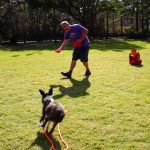 If a dog is dismissed, it means the handler is "off limits". Dismissal does not mean the dog has to leave, just that the handler is not available. Dismissal is a valuable drive... More the dog,”Go Do Dog Stuff…”.
If a dog is dismissed, it means the handler is "off limits". Dismissal does not mean the dog has to leave, just that the handler is not available. Dismissal is a valuable drive... More the dog,”Go Do Dog Stuff…”.
This downtime in the game due to poor performance provides a stark contrast with a lively game full of success.





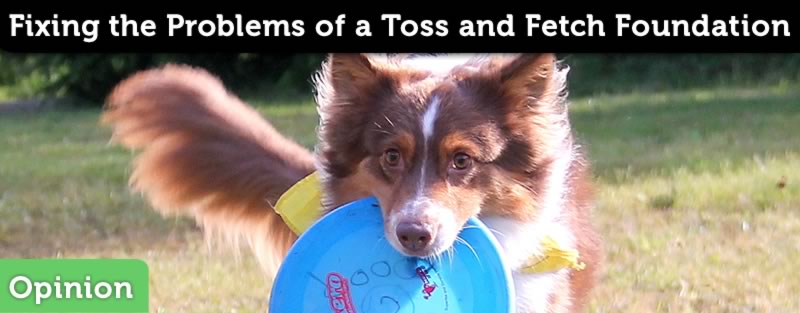
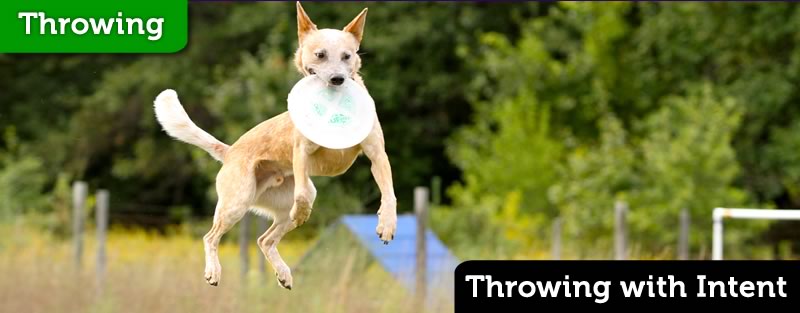
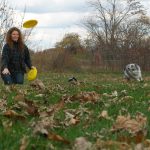
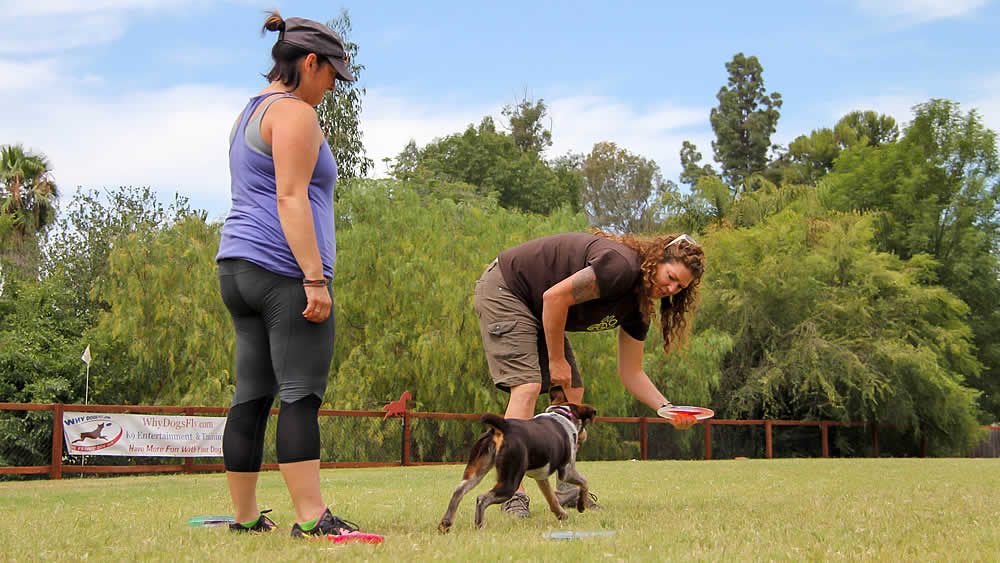
Great stuff Ron and lots of great reminders. I especially like the Planning part. Now when are you coming out so we can work on the back vault? 🙂
We’d love to come out and work with you ladies, Nadja!
Not sure when we’ll be able to, though.
Thanks a bunch for reading…
Peace,
Ron
Hey Ron like the planning really need it with diablo !Wish you and Apryl well,Diablo took 3rd place in her first freestyle I need more planning!!!! I can’t always keep up with her your class really helped me in alot of areas thanks!Peace
Hey Ron,
Thanks for this!! I have taught a lot of targeting and focus behaviour to my very intense and high-drive BC. Funny thing is, until I read the above observations about training in drive, I didn’t realize I was short-cutting it–that is, my dog has amazing focus, but I realized that I wasn’t asking him to check in and ‘look’ at me. The change I have noticed with the taking the time to check in with my dog and have him focus on me BEFORE throwing the disc is pretty cool–his catch percentage is going up! Instead of him just driving to get to the disc at all costs, the check-in seems to help him focus on the catch rather than just the chase. So, a big thanks!!
Emily
Awesome, Emily!
For real tough nuts we add attention between every trick.
peace
Not sure where to put this. Criteria was very low just seeing if they would play the game. Jada is 1sta and last. This is the 1st time I ever this a disk to her. Tessa is still more interested in the environment.
https://www.youtube.com/watch?v=HbLOHdKbbyo&feature=youtube_gdata_player
Believe we went over this in video chat, Russel.